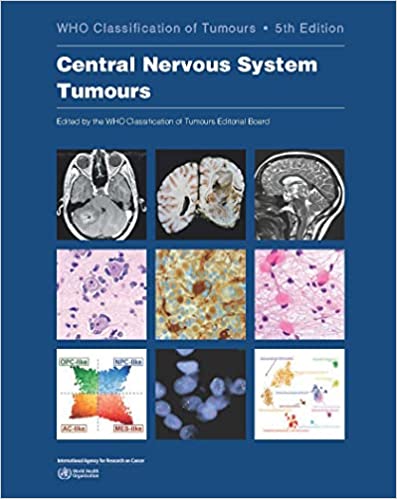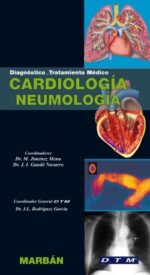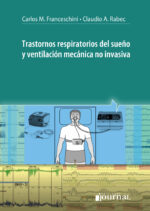List of abbreviations xi
Foreword xii
ICD-O topographical coding 1
ICD-O morphological coding 1
CNS tumours 2
1 Introduction to CNS tumours 7
2 Gliomas, glioneuronal tumours, and neuronal tumours 15
Introduction 16
Adult-type diffuse gliomas
Astrocytoma, IDH-mutant 19
Oligodendroglioma, IDH-mutant and 1p/19qcodeleted 28
Glioblastoma, IDH-wildtype 39
Paediatric-type diffuse low-grade gliomas
Diffuse astrocytoma, MYB- or MYBL1-altered 56
Angiocentric glioma 59
Polymorphous low-grade neuroepithelial tumour of
the young 62
Diffuse low-grade glioma, MAPK pathway–altered 65
Paediatric-type diffuse high-grade gliomas
Diffuse midline glioma, H3 K27–altered 69
Diffuse hemispheric glioma, H3 G34–mutant 74
Diffuse paediatric-type high-grade glioma,
H3-wildtype and IDH-wildtype 77
Infant-type hemispheric glioma 81
Circumscribed astrocytic gliomas
Pilocytic astrocytoma 83
High-grade astrocytoma with piloid features 90
Pleomorphic xanthoastrocytoma 94
Subependymal giant cell astrocytoma 100
Chordoid glioma 104
Astroblastoma, MN1-altered 107
Glioneuronal and neuronal tumours
Ganglioglioma 111
Gangliocytoma 116
Desmoplastic infantile ganglioglioma /
desmoplastic infantile astrocytoma 119
Dysembryoplastic neuroepithelial tumour 123
Diffuse glioneuronal tumour with
oligodendroglioma-like features and nuclear
clusters 127
Papillary glioneuronal tumour 130
Rosette-forming glioneuronal tumour 133
Myxoid glioneuronal tumour 136
Diffuse leptomeningeal glioneuronal tumour 139
Multinodular and vacuolating neuronal tumour 143
Dysplastic cerebellar gangliocytoma (Lhermitte–
Duclos disease) 146
Central neurocytoma 149
Extraventricular neurocytoma 153
Cerebellar liponeurocytoma 156
Ependymal tumours
Introduction 159
Supratentorial ependymoma 161
Supratentorial ependymoma, ZFTA fusion–positive 164
Supratentorial ependymoma, YAP1 fusion–positive 167
Posterior fossa ependymoma 169
Posterior fossa group A (PFA) ependymoma 172
Posterior fossa group B (PFB) ependymoma 175
Spinal ependymoma 177
Spinal ependymoma, MYCN-amplified 180
Myxopapillary ependymoma 183
Subependymoma 186
3 Choroid plexus tumours 189
Choroid plexus papilloma 190
Atypical choroid plexus papilloma 193
Choroid plexus carcinoma 195
4 Embryonal tumours 199
Medulloblastoma
Introduction 200
Medulloblastomas, molecularly defined
Medulloblastoma, WNT-activated 203
Medulloblastoma, SHH-activated and TP53-wildtype 205
Medulloblastoma, SHH-activated and TP53-mutant 208
Medulloblastoma, non-WNT/non-SHH 211
Medulloblastomas, histologically defined
Medulloblastoma, histologically defined 213
Other CNS embryonal tumours
Introduction 220
Atypical teratoid/rhabdoid tumour 221
Cribriform neuroepithelial tumour 226
Embryonal tumour with multilayered rosettes 228
CNS neuroblastoma, FOXR2-activated 232
CNS tumour with BCOR internal tandem duplication 235
CNS embryonal tumour NEC/NOS 238
5 Pineal tumours 241
Introduction 242
Pineocytoma 243
Pineal parenchymal tumour of intermediate
differentiation 246
Pineoblastoma 249
Papillary tumour of the pineal region 253
Desmoplastic myxoid tumour of the pineal region,
SMARCB1-mutant 256
6 Cranial and paraspinal nerve tumours 259
Introduction 260
Schwannoma 261
Neurofibroma 265
Perineurioma 269
Hybrid nerve sheath tumours 271
Malignant melanotic nerve sheath tumour 273
Malignant peripheral nerve sheath tumour 275
Cauda equina neuroendocrine tumour (previously
paraganglioma) 279
7 Meningioma 283
8 Mesenchymal, non-meningothelial tumours involving the
CNS 299
Introduction 300
Soft tissue tumours
Fibroblastic and myofibroblastic tumours
Solitary fibrous tumour 301
Vascular tumours
Haemangiomas and vascular malformations 306
Haemangioblastoma 310
Skeletal muscle tumours
Rhabdomyosarcoma 314
Tumours of uncertain differentiation
Intracranial mesenchymal tumour, FET::CREB
fusion–positive 317
CIC-rearranged sarcoma 320
Primary intracranial sarcoma, DICER1-mutant 323
Ewing sarcoma 326
Chondro-osseous tumours
Chondrogenic tumours
Mesenchymal chondrosarcoma 330
Chondrosarcoma 332
Notochordal tumours
Chordoma 335
9 Melanocytic tumours 339
Introduction 340
Diffuse meningeal melanocytic neoplasms
Melanocytosis and melanomatosis 341
Circumscribed meningeal melanocytic neoplasms
Melanocytoma and melanoma 344
10 Haematolymphoid tumours involving the CNS 349
Introduction 350
Lymphomas
CNS lymphomas
Primary diffuse large B-cell lymphoma of the CNS 351
Immunodeficiency-associated CNS lymphomas 356
Lymphomatoid granulomatosis 358
Intravascular large B-cell lymphoma 360
Miscellaneous rare lymphomas in the CNS
MALT lymphoma of the dura 362
Other low-grade B-cell lymphomas of the CNS 364
Anaplastic large cell lymphoma (ALK+/ALK−) 366
T-cell and NK/T-cell lymphomas 368
Histiocytic tumours
Erdheim–Chester disease 370
Rosai–Dorfman disease 372
Juvenile xanthogranuloma 374
Langerhans cell histiocytosis 376
Histiocytic sarcoma 379
11 Germ cell tumours 381
12 Tumours of the sellar region 391
Introduction 392
Adamantinomatous craniopharyngioma 393
Papillary craniopharyngioma 397
Pituicytoma, granular cell tumour of the sellar
region, and spindle cell oncocytoma 401
Pituitary adenoma / pituitary neuroendocrine tumour 406
Pituitary blastoma 415
13 Metastases to the CNS 417
Metastases to the brain and spinal cord parenchyma 418
Metastases to the meninges 421
14 Genetic tumour syndromes involving the CNS 423
Introduction 424
Neurofibromatosis type 1 426
Neurofibromatosis type 2 429
Schwannomatosis 434
Von Hippel–Lindau syndrome 437
Tuberous sclerosis 441
Li–Fraumeni syndrome 446
Cowden syndrome 449
Constitutional mismatch repair deficiency syndrome 452
Familial adenomatous polyposis 1 456
Naevoid basal cell carcinoma syndrome 458
Rhabdoid tumour predisposition syndrome 460
Carney complex 462
DICER1 syndrome 464
Familial paraganglioma syndromes 467
Melanoma-astrocytoma syndrome 471
Familial retinoblastoma 473
BAP1 tumour predisposition syndrome 475
Fanconi anaemia 478
ELP1-medulloblastoma syndrome 481
Contributors 483
Declaration of interests 489
IARC/WHO Committee for ICD-O 491
Sources 493
References 501
Subject index 557
Previous volumes in the series 568












